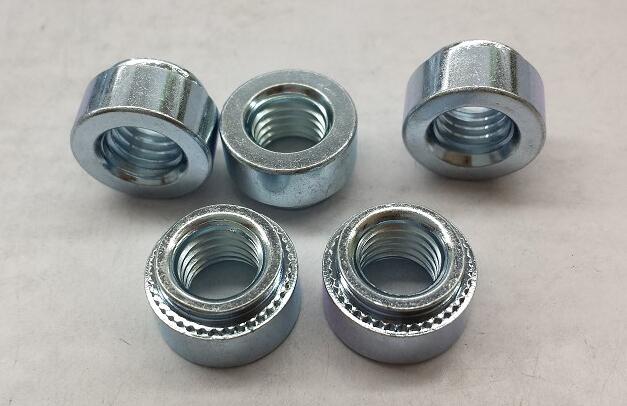
Cold forging cracking is a common problem in the cold forging process, which can affect the quality and service life of the product. To thoroughly understand the causes of cold forging cracking, we have analyzed the manufacturing process and material characteristics of cold forging steel nuts and proposed some solutions to improve product performance and reliability.
Firstly, material selection is key to preventing cold forging cracking. When choosing steel for cold forging, factors such as chemical composition, mechanical properties, and cold upsetting performance should be considered. High-quality cold forging steel should have an appropriate carbon content, alloy elements, and good ductility and plasticity. Additionally, the grain size and heat treatment state of the material will also affect the occurrence of cold forging cracking. Therefore, it is important to select the right grain size and appropriate heat treatment process to improve the material's crack resistance.
Secondly, the reasonable selection of cold forging process parameters is also an important measure to prevent cold forging cracking. The number of impacts, speed, and force should be determined based on the material's properties and the shape of the workpiece. Excessive impact loading can lead to excessive cold working hardening of the material, thereby reducing its plasticity and toughness and increasing the risk of cracking. Therefore, the number and force of impact loading should be rationally selected according to the requirements of the workpiece and the material's performance. Moreover, the design and manufacturing quality of the cold forging die will also affect the occurrence of cold forging cracking. The die should have sufficient strength and hardness, as well as good wear resistance and thermal conductivity. The design of the die should consider the shape and size of the workpiece and the material's flowability to reduce the occurrence of cracks.
Additionally, the design and manufacturing process of the workpiece will also affect the occurrence of cold forging cracking. The shape and size of the workpiece should adapt to the material's flowability and deformation rules to reduce the formation of cracks. Furthermore, the manufacturing process of the workpiece should be selected to minimize stress and deformation. For example, appropriate heating temperature and holding time should be used to reduce the material's thermal stress and organizational stress.
Lastly, appropriate inspection and treatment of the workpiece after cold forging is an important step in preventing cold forging cracking. Dimensional and shape checks should be performed on the workpiece after cold forging to ensure compliance with requirements. Appropriate treatment, such as repair or replacement, should be carried out for workpieces with cracks or other defects to ensure product quality and service life.
In summary, by analyzing the manufacturing process and material characteristics of cold forging steel nuts, we can identify the main causes of cold forging cracking and take corresponding measures to prevent cracking. By selecting suitable materials, rationally choosing cold forging process parameters, designing and manufacturing high-quality dies, and selecting appropriate workpiece design and manufacturing processes, as well as conducting appropriate inspection and treatment of workpieces after cold forging, we can improve product performance and reliability, and reduce the risk of cold forging cracking. It is hoped that this information will help you better understand the causes of cold forging cracking and improve the quality and service life of your products.





 Customer service 1
Customer service 1  Customer service 2
Customer service 2